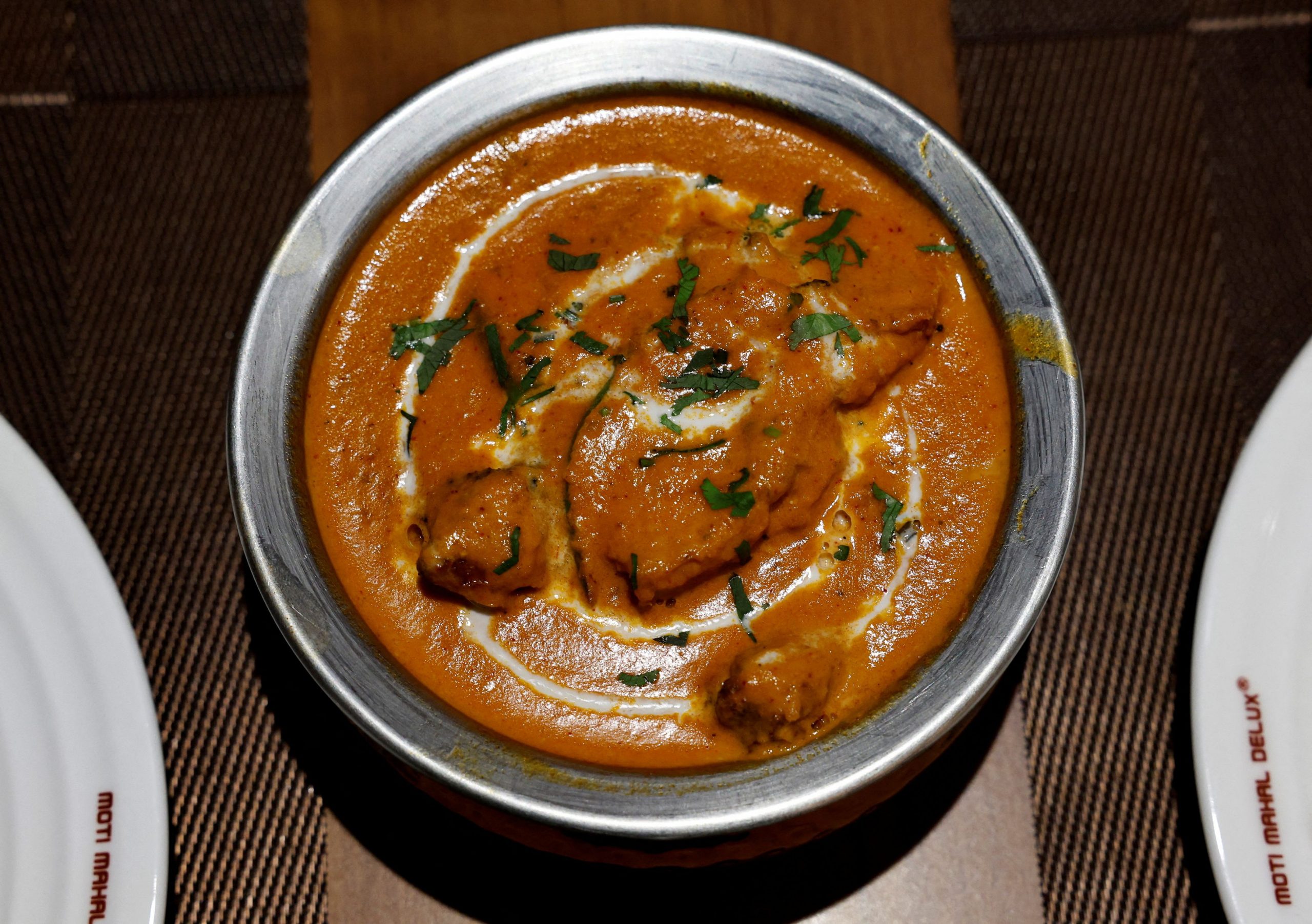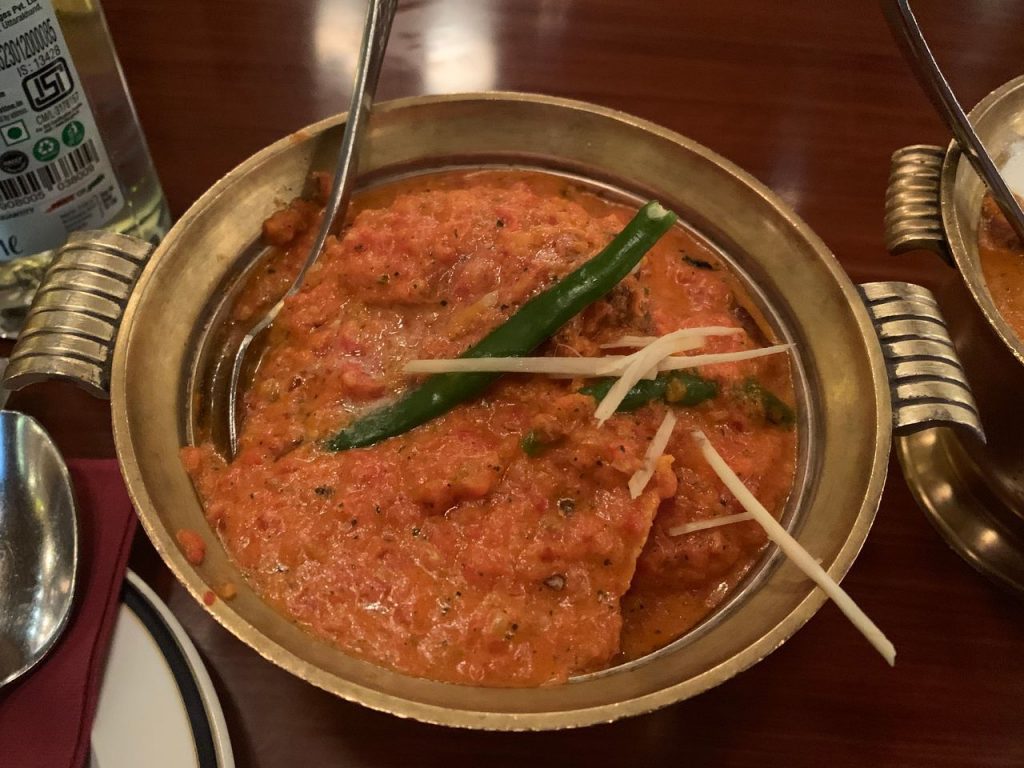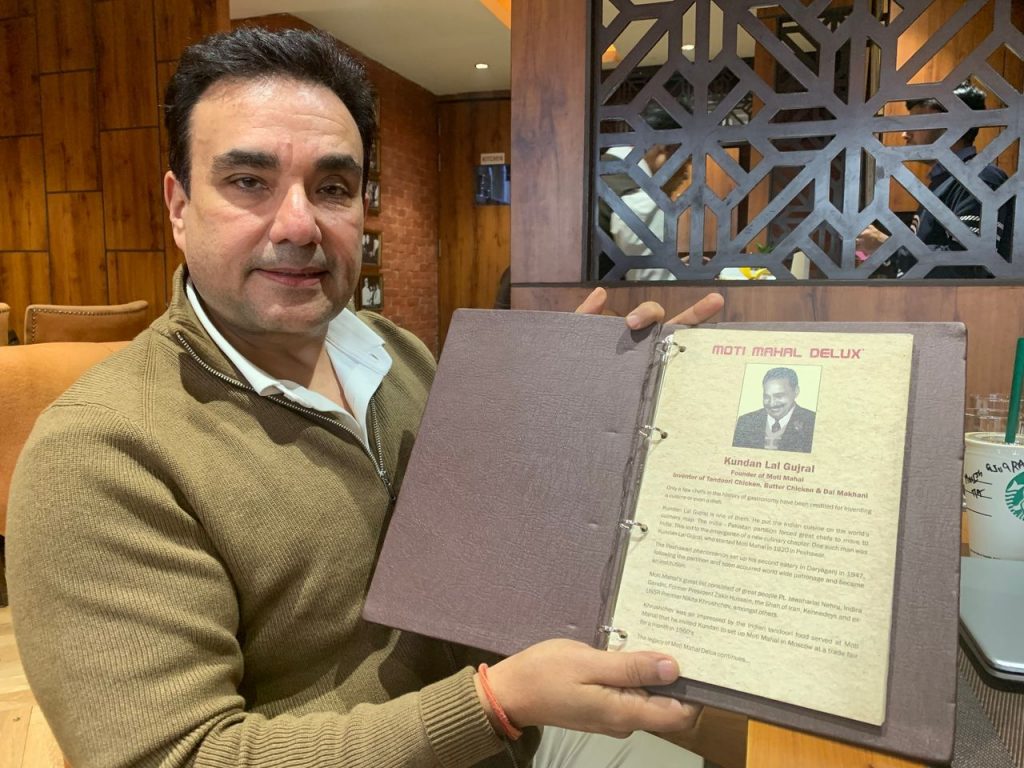NEW DELHI—Butter chicken is among India’s most famous culinary exports. The fragrant, creamy curry has been adapted into pizzas in the U.S., a poutine topping in Canada and a pie filling in Australia. There is a “ World Butter Chicken Day .”
Now butter chicken is at the center of a saucy real-life drama roiling India. The bone of contention: Who invented the dish?
Rival restaurant chains are in a legal chicken fight over who created butter chicken. The culinary clash has risen to the Delhi High Court and is transfixing the nation, with debates rocketing through social media and TV stations keeping a rapt public abreast of the squabble.
“Who stole my butter chicken?” blared one local headline. Another dubbed it “a delicious dispute.” The showdown has roots in a storied New Delhi restaurant called Moti Mahal. It was founded in 1947, and known for serving the first butter chicken, which features tandoori chicken cooked in a tomato-based sauce with butter and cream.
The watering hole became a favorite with power brokers and starlets. Jacqueline Kennedy Onassis and Richard Nixon dined there. (Not together!) Jawaharlal Nehru , India’s first prime minister, was a regular, and Nikita Khrushchev used to fly Moti Mahal’s chefs and platters of chicken to Moscow for state banquets.
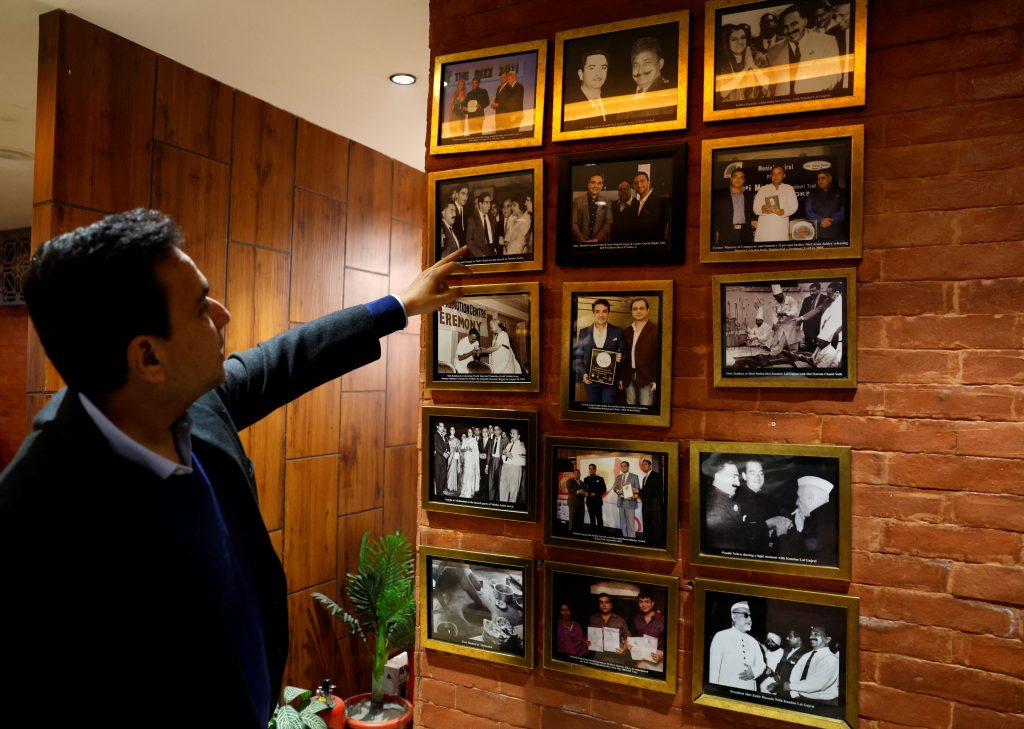
Moti Mahal Delux Managing Director Monish Gujral shows photographs of celebrities and politicians inside the restaurant in New Delhi, India, January 23, 2024. REUTERS/Sahiba Chawdhary NO RESALES. NO ARCHIVES.
The dueling restaurateurs are the adult grandsons of the original partners of Moti Mahal.
On one side is Monish Gujral, 58, who operates a franchising chain, called Moti Mahal Delux, with about 150 restaurants worldwide, including in Manhattan, North Carolina and throughout India. A prolific butter-chicken booster, Gujral wrote a cookbook called “On the Butter Chicken Trail.”
In a nearly 3,000-page court filing, Gujral claims his grandfather invented butter chicken in the 1930s in Peshawar, in what is now Pakistan, as a creative use of leftovers and took the idea to New Delhi after the 1947 division of India and Pakistan —and then became a partner in the Moti Mahal restaurant.
Last year, according to Gujral, he bristled when he saw the owners of a newer restaurant chain, Daryaganj, appear on the TV show “Shark Tank India,” seeking investment to expand their chain.
In the episode, Raghav Jaggi, the 43-year-old founder of Daryaganj, credits his own grandfather, who was also a partner at Moti Mahal, with inventing butter chicken.
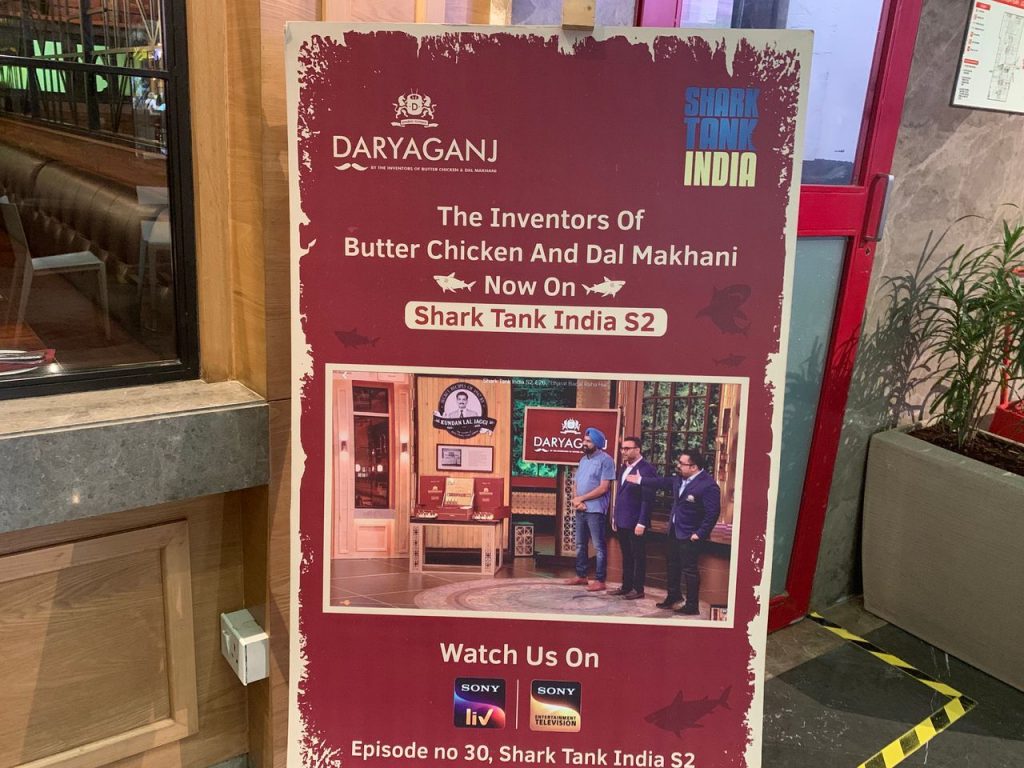
A sign outside a Daryaganj restaurant in Delhi touts the ‘Shark Tank India’ appearance and the butter-chicken bona fides. PHOTO: SHAN LI/THE WALL STREET JOURNAL
”It rang the bells,” said Gujral. “I was like, ‘What is happening?’”
He has sued Daryaganj for copyright infringement and unfair competition in Delhi High Court.
”They are piggybacking off my legacy,” Gujral said of Daryaganj owners. “What big cheats they are.”
Not true, according to Jaggi. He says his grandfather was the brains behind the legendary dish, whipping up the first batch in 1947 for refugees who came knocking at the curry house’s door.
Jaggi says Daryaganj, which opened in 2019, is named after the Delhi neighborhood where Moti Mahal was located as a tribute to that legacy. “This entire case is so baseless, so misconceived, and completely causeless,” he said.
Butter chicken is among other high-profile food beefs, including over burrito bowls , the phrase “ Taco Tuesday ” and whether cheese not made in Greece can be called “Feta .”
The original Moti Mahal was part of vast changes in cuisine triggered by the chaotic 1947 partition of Britain’s former colony into India and Pakistan.
In Delhi, where sit-down restaurants were mostly posh spots specializing in Western cuisine , a new crop of eateries, such as Moti Mahal, catered to the middle-class people streaming into India.
Butter chicken migrated to other countries. Chicken tikka masala, which the U.K. has claimed as its own, is likely a variation tweaked for the British palate, food experts say. So commonplace is the dish the New Yorker in 2018 profiled a Texas woman whose “Instant Pot Keto Indian Butter Chicken” recipe went viral.
Lawyers and food experts say it could be nearly impossible to definitively pinpoint the mother hen of butter chicken.
Both sides have unearthed ancient partnership deeds, handwritten documents, and old newspaper clippings.
“Nobody can claim priority of invention on any dish which has been in the public domain for more than a century,” said Pushpesh Pant, a food historian in New Delhi. “You can create a back story to create market hype, but that’s it.”
He said butter chicken’s ingredients have been around for a long time, evidence of tandoori chicken goes back thousands of years, and some roadside eatery might have invented butter chicken long ago.
Adding to the confusion, both grandfathers had the same first and middle names: Kundan Lal. News stories occasionally referred to them as “the two Kundan Lals,” and in their later years, the mustachioed men could have passed for brothers.
The grandsons disagree on the division of duties at Moti Mahal. Jaggi, the Daryaganj founder, who is also a New York City-based executive at a data analytics firm, says his grandfather handled the kitchen, while Gujral’s grandfather was the public-relations maestro.
Gujral dismisses his rival’s version as “lame” and “super fictional.”
Gujral’s lawsuit is asking for $240,000 in damages and an injunction to bar Daryaganj from claiming Jaggi’s grandfather invented butter chicken and a lentil dish called dal makhani.
Daryaganj’s logo includes a mustache and the tagline “By the Inventors of Butter Chicken and Dal Makhani.”
Butter chicken fans are baffled at the squawking.
Anuj Goel, 44, a self-described foodie who works at a software company in New Delhi, has dined at both restaurant chains.
“They’re both overrated,” Goel said. “Why are you fighting? Serve people a good quality product and people can decide for themselves.”
Pankaj Vohra, 69, a veteran journalist in New Delhi, recalls his father taking him to Moti Mahal as a young lad.
He remembers Gujral’s grandfather, the bon vivant host, welcoming guests with a glass of whiskey, while Jaggi’s grandfather worked quietly in the background. The two Kundan Lals were extremely close, he said, although their partnership ended in a dispute.
“The grandsons should let their grandfathers’ souls rest in peace,” he said.
Write to Shan Li at shan.li@wsj.com
